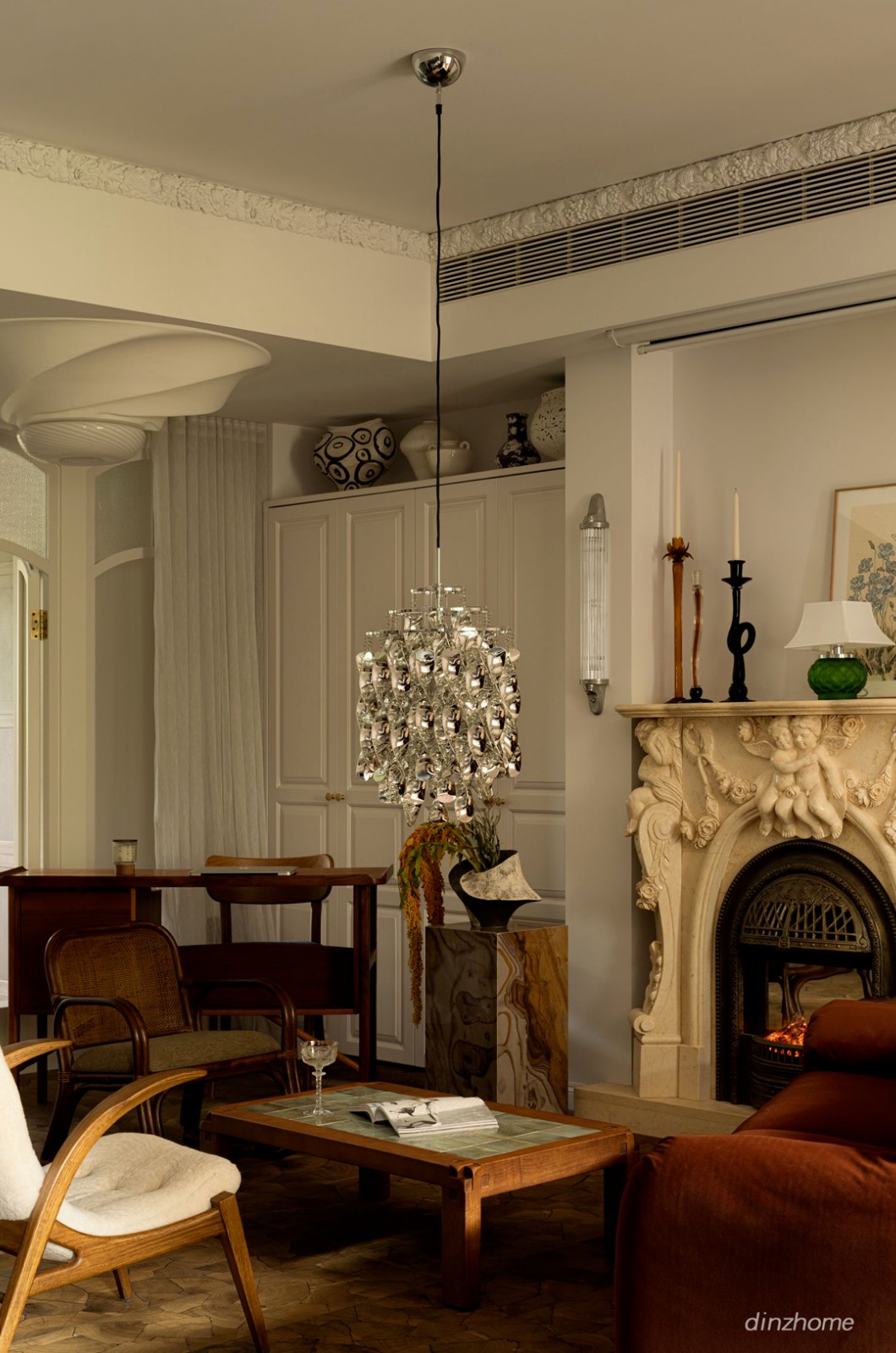Wohnhaus in Münster Roman Hutter Architektur
2013-08-29 01:00
架构师提供的文本描述。最初的情况-瓦莱斯州的一个小镇,四周环绕着令人印象深刻的山脉全景,以几个世纪前的木制木屋为特征。新建筑以其不典型的比例、巨大的阳台、附加的车库和假的角落关节而脱颖而出。他们不符合真正建造的木制建筑的传统。由于这种麻木不仁的做法和缺乏采用传统工艺的意愿,他们似乎被错误地安置在村庄的一般历史集群中。
Text description provided by the architects. INITIAL SITUATION_Münster - a small town in the Valais canton, surrounded by an impressive mountain panorama and characterized by centuries-old wooden log houses. New buildings stand out with their atypical proportions, huge balconies, attached garages and fake corner joints. They don’t comply with the tradition of the truthfully constructed wooden buildings. Due to this insensitive approach and the missing willingness to apply the traditional craftsmanship, they seem misplaced within the generic historical cluster of the village.
该建筑位于蒙斯特村的边缘。底层由混凝土制成,作为支撑两层木结构的基础。该建筑具有分层的特点,利用倾斜的地形,而地球运动可以减少到一个绝对的最小。在典型的当地草地的包围下,一条狭窄的鹅卵石小路从道路通向西面入口、西南面的露台和南面入口。在冬天的几个月里,你可以从这里直接走到附近的滑雪坡上。
PROJECT SITE_The building is located at the edge of the village Münster. The ground floor is made of concrete and works as a base that carries the two-story wooden construction. Featuring split-levels, the building makes use of the sloping terrain while earth movements can be reduced to an absolute minimum. Surrounded by the typical local meadows, a narrow cobblestone path leads from the road to the western entrance, the southwest-facing patio and the southern entrance. During the winter months, one can step straight on the adjacent ski slope from here.
材料-原木建造方法的特点是由结构和物质性决定的。原木结构本身是由落叶松木材制成的。它比云杉木更高贵、更有抵抗力。落叶松木材也是用于窗户和大多数内置。贯穿建筑物内部的圆木墙在任何时候都是可见的。内部绝缘外墙是包覆和覆盖普希金绿壤土渲染。沿着抹灰表面上边缘的阴影间隙清楚地揭示了它们的非结构性特征。
MATERIAL_ The character of the log building method is determined by structure and materiality. The log structure itself is made of larch wood. It is more noble and resistant than spruce wood. Larch wood is also used for the windows and most of the built-ins. The log walls penetrating the inside of the building are visible at all times. The internally insulated outer walls are clad and covered with Pushkin green loam rendering. A shadow gap along the upper edge of the plastered surfaces clearly reveals their non-structural character.
空间概念-当使用日志构建方法时,建筑物内部会自动成为一组空间。根据它们的功能水平缩放它们会产生两个主房间和两个辅助房间,而不是四个大小相等的房间。较小的附属房间吸收了两个入口区域,楼梯井,厨房和浴室。不同的天花板高度创造了一个垂直区分的房间,可以感觉到整个建筑物,并使人联想到卢斯的拉乌姆计划。这种空间互动也清楚地显示在建筑物的正面。南入口通往一楼,由客房、客房和技术室组成。西部入口位于中间着陆处。一条短楼梯通向宽敞的餐厅,餐厅内设有一个天花板很高的厨房。再爬两步就能到达隆起的生活区。在三楼,两间卧室和共用浴室的楼层也有相同的差别。
SPATIAL CONCEPT_ When using the log building method, the inside of a building automatically becomes a cluster of chambers. Scaling them horizontally according to their function generates two main rooms and two ancillary rooms instead of four equally sized rooms. The smaller ancillary rooms absorb both entrance areas, the stairwell, the kitchen and the bathroom. Different ceiling heights create a vertical differentiation of the rooms that can be perceived throughout the entire building and is reminiscent of Loos’ Raumplan. This spatial interplay also clearly shows in the facades of the building. The southern entrance leads into the ground floor which consists of guest room, guest bath and technical room. The western entrance is located at an intermediate landing. A short stair is leading to the spacious dining room featuring a high-ceilinged kitchen. The raised living area can be reached by climbing two more steps. The same difference in level can be found on the third floor between the two bedrooms and the shared bath room.
可持续性-由于从地面提取热能,没有使用化石能源生产热量。可再生建筑材料木材减少了灰色能源的数量,从而决定性地减少了建筑的生态足迹。除此之外,回到原木的建造方法,保存,振兴和推广传统的地方工艺。
SUSTAINABILITY_Thanks to the extraction of thermal heat from the ground, no fossil energy is used for heat production. The renewable construction material wood reduces the amount of grey energy and thus decisively minimizes the ecological footprint of the building. In addition to that, returning to the log building method preserves, revives and promotes a traditional local craftsmanship.
 举报
举报
别默默的看了,快登录帮我评论一下吧!:)
注册
登录
更多评论
相关文章
-

描边风设计中,最容易犯的8种问题分析
2018年走过了四分之一,LOGO设计趋势也清晰了LOGO设计
-

描边风设计中,最容易犯的8种问题分析
2018年走过了四分之一,LOGO设计趋势也清晰了LOGO设计
-

描边风设计中,最容易犯的8种问题分析
2018年走过了四分之一,LOGO设计趋势也清晰了LOGO设计
.jpg)



































.jpg)

.jpg)



.jpg)

.jpg)

.jpg)

.jpg)

.jpg)

.jpg)

.jpg)

.jpg)

.jpg)

























